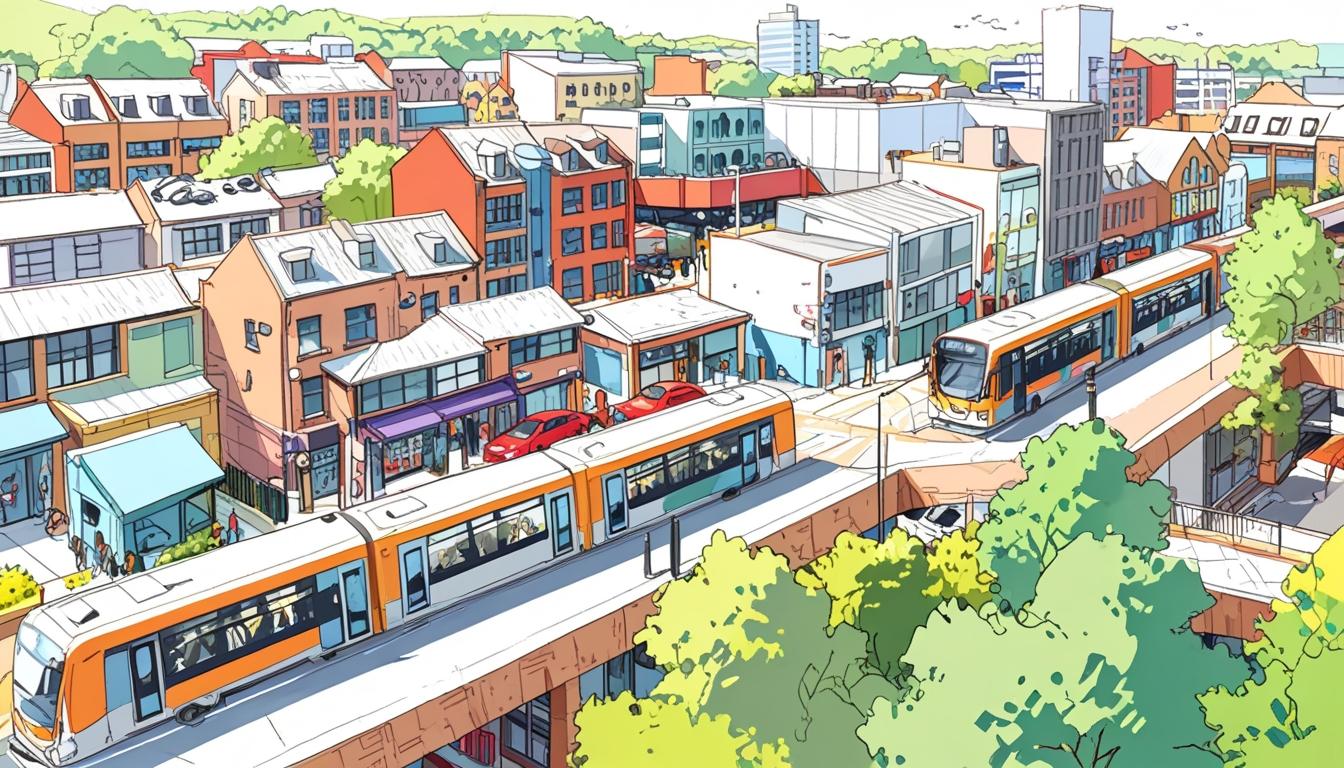Recent analysis by estate agents Hamptons reveals a significant shift in downsizing trends among homeowners in the UK, highlighting a move away from traditional retirement hotspots like Devon and the Cotswolds towards less expected locations. Areas such as Denbighshire and Stirling now rank as the preferred destinations for older home movers seeking smaller properties, reflective of changing priorities as retirees look for vibrant communities rather than isolated rural settings.
The findings indicate that downsizers, defined as those selling homes to purchase properties with at least one less bedroom, increasingly opt for locations with stronger transport links and proximity to urban centres. Richard Donnell, executive director at property portal Zoopla, notes that “a lot of popular places among downsizers were rural and not well connected, with only bus services, but now people want to be active. They want to be close to big cities or on good train lines.”
Across the UK, the average downsizer releases approximately £18,800 after spending an average of £359,400 on a new home. Notably, these new hotspots offer significantly lower property prices, allowing downsizers to unlock larger sums of equity. For example, in Dundee City, which tops the list of affordable downsizing locations, the average purchase price is just £114,800, enabling homeowners to release about £74,500 in equity.
East Suffolk holds the largest share of downsizers in recent years, as 48 per cent of all property transactions in the area were attributed to this demographic. This region, encompassing towns like Felixstowe, combines coastal benefits with accessibility, leading to its rising popularity. Sophia Fuller, head of Suffolk at Strutt & Parker, stated, “Downsizers here primarily come from out of area. It’s always been popular as there’s not just one seaside town here. Their children can come easily on the train from London, too.”
Crawley is another surprising destination, with 37 per cent of property transactions made by downsizers. The average expenditure for a new home stands at £284,900, supported by excellent transport connections to London and the presence of Gatwick Airport.
While higher rates of downsizing are evident in locations such as Oadby and Wigston, where 42 per cent of moves were by downsizers, and South Northamptonshire, where average expenditures reach £388,800, the distinctive trend in these emerging hotspots suggests a preference for areas that balance affordability with lifestyle opportunities.
Denbighshire, in North Wales, ranks second in the list with a 44 per cent downsizing rate, offering seaside resorts like Rhyl and Prestatyn alongside rural towns. Lauren Jones, a sales negotiator at Williams Estates in Denbigh, highlighted the significant value downsizers find in coastal areas, where larger properties are often available for less than in more sought-after rural locations.
The unaffordability of traditional retirement areas is pushing buyers towards more economically viable options. Jonathan Handford, managing director of estate agents Fine & Country, pointed out that the rising living costs and property prices in places like Cornwall have deterred potential buyers. For instance, the average house price in St Ives exceeds £513,000, making it less accessible for retiring homeowners.
Scotland has emerged as an appealing alternative, with Stirling—just 55 minutes from Edinburgh—appealing to downsizers looking for an enriching lifestyle. With ample opportunities to enjoy natural beauty alongside urban conveniences, the area is becoming popular among those selling higher-value homes in the south of the UK. Tony Griffith, manager at Allen and Harris Stirling, noted the city’s dual appeal: “It’s just a short drive from the Trossachs, Loch Lomond and mountains—there's convenience but also beautiful vistas on your doorstep.”
Overall, the phenomenon of downsizing is evolving, with a newer, potentially younger demographic embracing vibrant communities and financial prudence over traditional idyllic retreats. As the landscape of property buying continues to shift, homeowners are increasingly prioritising lifestyle and accessibility in their decisions.
Source: Noah Wire Services
